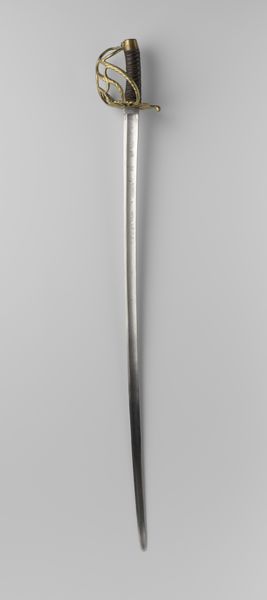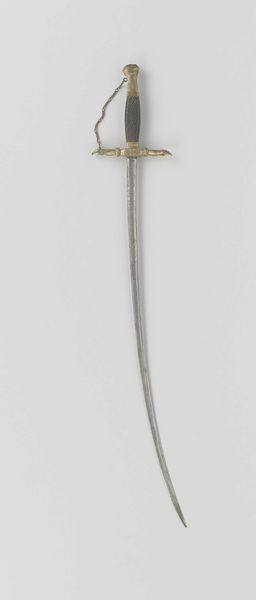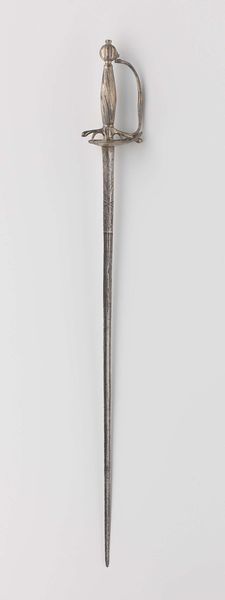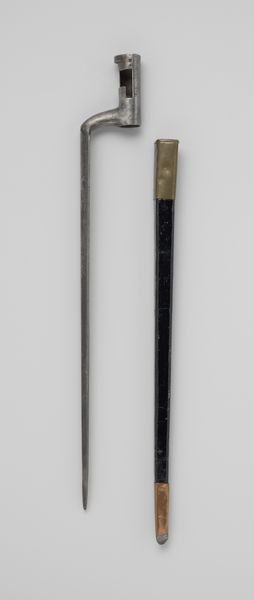
metal, sculpture
#
medieval
#
metal
#
sculpture
Copyright: Rijks Museum: Open Domain
Editor: We're looking at a cavalry sabre with an etched blade, made sometime between 1800 and 1850. It’s crafted from metal, giving it this worn, yet formidable look. What kind of stories do you think this piece holds? Curator: Well, it definitely prompts questions about power dynamics and the historical contexts of violence and conflict. Think about the social role of cavalry officers during that era. What did it mean to wield such a weapon? Editor: So, you see it as representing societal power structures of the time? Curator: Absolutely. This isn’t just an object; it embodies the politics of the era. A sabre like this represents masculine ideals and military authority. Who was granted the power to use this, and against whom? We must question its purpose and who benefitted from its use. Consider the blade’s etching – what narratives or symbols are included, and what perspective do they represent? Editor: I never thought about the etching on the blade itself telling a story! Curator: The smallest details often hold the most significance, revealing embedded cultural values and historical realities. Even its display today – is it presented as a relic of valor, or an artifact prompting critical reflection on conflict and its consequences? We need to examine that too. Editor: That's such a fascinating perspective. I’ll definitely look at historical objects in a new light. Curator: Understanding objects like this requires thinking critically about history's messy truths and power dynamics to cultivate a deeper understanding. It’s not just about aesthetics; it's about understanding the past's impact on our present.
Comments
No comments
Be the first to comment and join the conversation on the ultimate creative platform.













